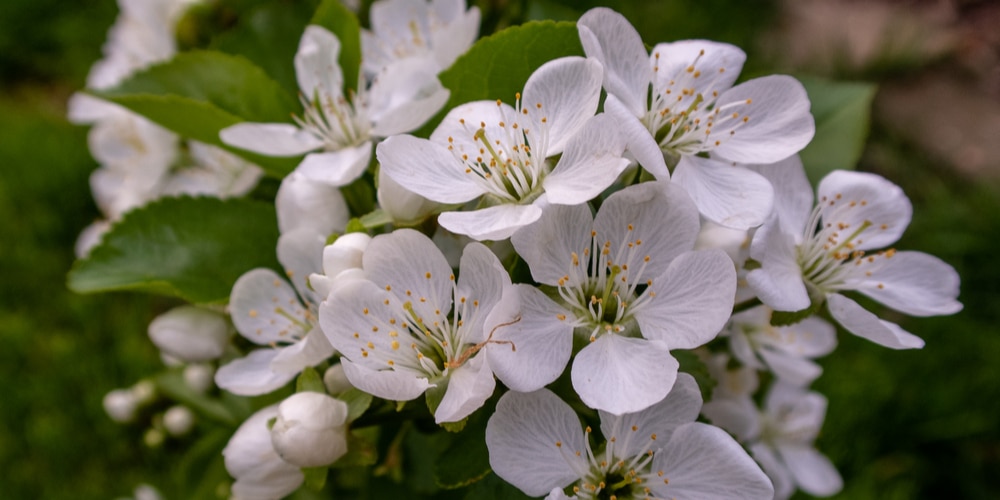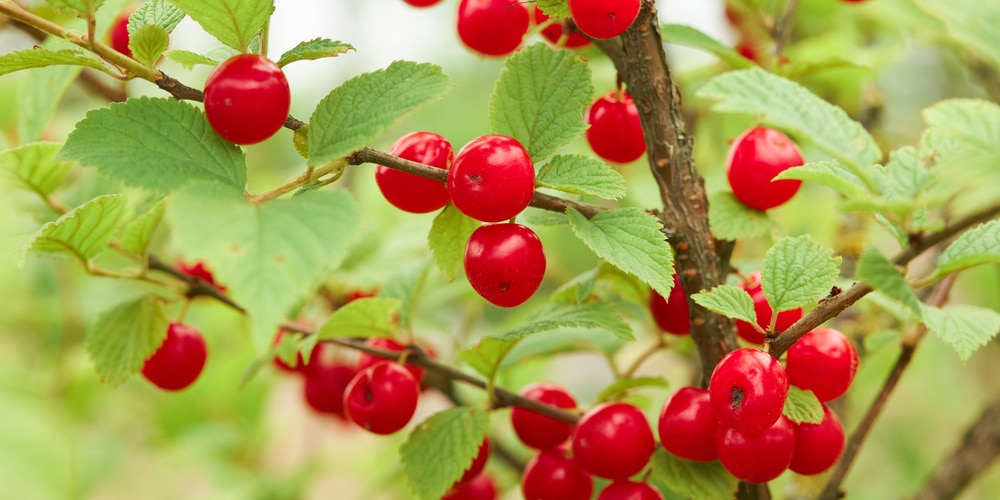Cherry trees are flowering trees that belong to the family Rosaceae, which also includes plums, peaches and apples. There are many varieties of cherry blossom trees, but most of them begin blooming in either early or late spring. The flowers range from white to pink and can be double or single. Cherries can be eaten fresh off the tree or used for making jams and pies. You may be wondering, ‘can cherry blossom trees grow in Arizona?’
Cherry blossom trees generally grow best in hardiness zones 4 to 7, depending on whether they are sweet or sour. In other words, they will grow best in mild-temperature climates that have low humidity. In addition, most cherry trees prefer full sun but can also tolerate partial shade. If you’re reading this article, you more than likely know that Arizona’s climate is arid.
Can Cherry Blossom Trees Grow in Arizona?
You can grow cherry trees in upper Arizona, particularly in Maricopa County. There have also been some success stories in the Phoenix valley. The heat in Southern Arizona is, however, too much for the cherry trees to survive. When growing cherry trees in Arizona, the best varieties to go with should be sweet cherries (Bing), and sour cherry (Montmorency).
Useful tips for growing cherry trees in Arizona
If you’re looking to grow cherry trees in Arizona, keep the following tips in mind as they will greatly increase your chances of success:
1. Select the right planting site
The first and most important thing to do when planting cherry trees is to determine the most ideal planting site. The best planting location is one that does not have too much shade, if any, and gets a good amount of light. Choose an area that is not too close to the house and has easy access to water from a hose.
2. Make sure the soil’s pH is ideal
Cherries require well-drained soil with a pH of between 6.0-6.8. Cherry trees can grow in well-drained sandy soils with a pH of 5.5 to 7.5, Sometimes, even clay soils with a pH of 5.5 to 7.2 will produce acceptable results when the soil is well-drained and rich in organic content. The only problem with growing cherry trees on heavy clay soil is that they become increasingly susceptible to root rot issues.
3. Make sure the soil is well-drained
Next, you want to follow a good rain garden design for planting your trees. Add lots of organic matter, such as compost and peat. That will help ensure that the soil drains well, which is important because it doesn’t rain much in Arizona!
4. Get your spacing right
If you are planting sweet cherries, make sure that there is enough space for the growth of two or more cherries. That’s in consideration that they will be needed for cross-pollination. The ideal spacing from one tree to the next should be 20-30 feet.
On the other hand, growing sour cherries does not require you to get more than one tree. The only factor that you want to pay attention to avoid planting your trees in the same spot where other fruit trees were growing, regardless of their type. That way, you will have reduced the chances of the tree being infected with fungal diseases.
5. Hole preparation
When digging the planting hole, make sure that the diameter is approximately twice that of the root ball. The depth should also be roughly twice the height of the root ball. Before placing the cherry tree in the hole, sprinkle a little bit of bone meal into the hole for nutritional purposes.
6. Setting the cherry tree
Get the potted cherry tree out of the container, and place it in the hole. See to it that the tree sits nice and straight before back-filling the hole. It’s also recommended that you add several shovelfuls of peat moss to the garden soil before adding it back. As you refill the hole, make sure to tamp the soil slightly to ensure that it’s holding the plant. Water the soil after.
7. Mulching the tree
Once the tree is in place, make sure to mulch the roots with about 2 inches of organic matter. It’s best to use a mulching blanket that has been shredded and mixed with peat moss. Also, you can use a thick layer of bark or leaves as a mulch for your tree. Be sure to avoid contact between the mulch and the trunk of the tree.
8. Water requirements
As the tree grows, you will want to keep the soil moist. That way, it will be easier for it to establish itself right. Make sure to water deeply but not so often. The best way to determine if it’s time to water your plant again is to check the soil to a depth of up to 3 inches. If it feels dry, it’s time to water it again.
9. Pruning and fertilizing
Once the tree is in place and thriving in spring, it’s time to get your pruning tools out. Prune branches that are being used for fruit production. As a cherry tree grows, it will produce up to three crops of fruit. It’s highly recommended that you prune the branches according to their size. Also, be sure to fertilize the tree after each rainfall. You can even apply a mycorrhizal fungi treatment to enhance the plant’s root system.
10. Pests and diseases
Cherry trees are susceptible to many fungal diseases, including anthracnose and leaf spot. In addition, they are also vulnerable to pests such as scale, mites and borers. In the case of these pests and diseases, the best thing to do is to contact a professional arborist or pest control service in Arizona. They will be able to diagnose any issues with your tree and recommend treatments that may be necessary to combat them.
Can Cherry Blossom Trees Grow in Arizona? Conclusion
It’s absolutely possible to grow cherry trees in Arizona. All you need to do is follow these basic tips and tricks that were outlined in this article. Make sure that you prepare the soil and plant it in the proper location.
Pay attention to the spacing from one tree to another and watch out for diseases, pests and other issues that may affect your cherry trees. Always remember that all it takes to see your tree flourish is a little bit of work on your end.
You may also like: When to Plant Pumpkins in Arizona


